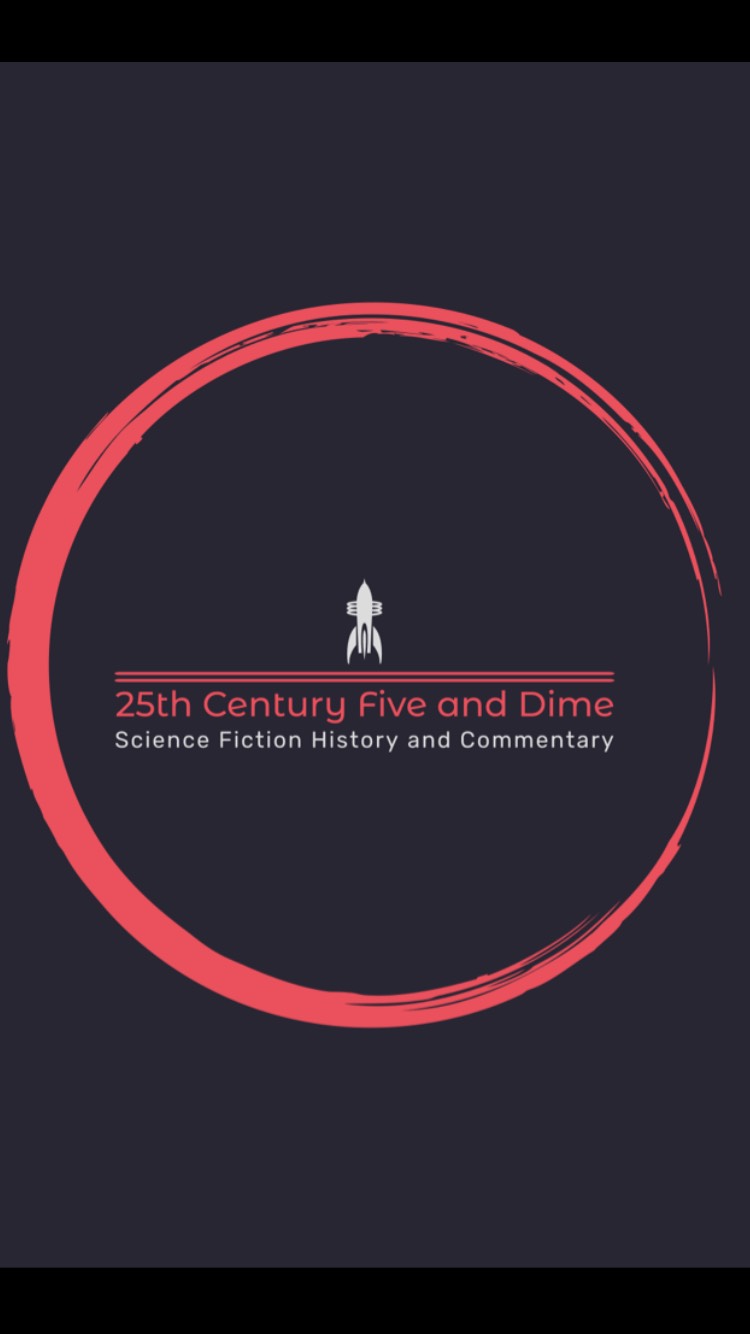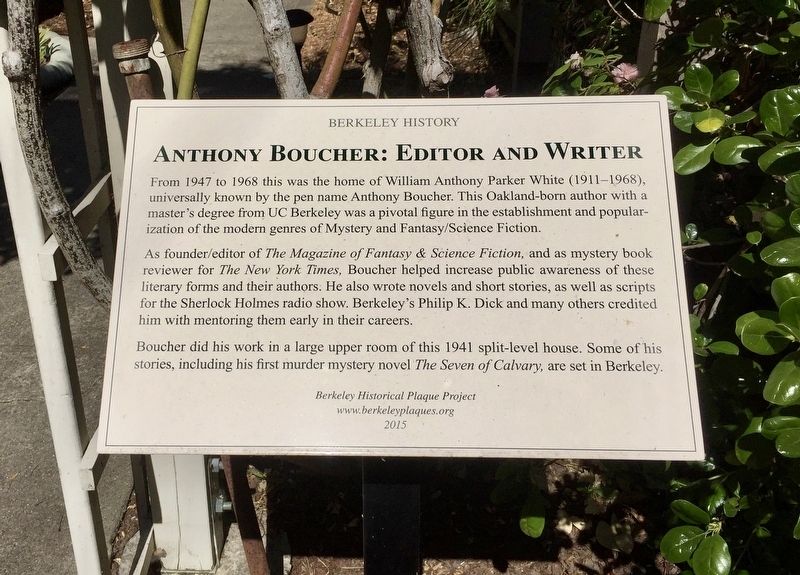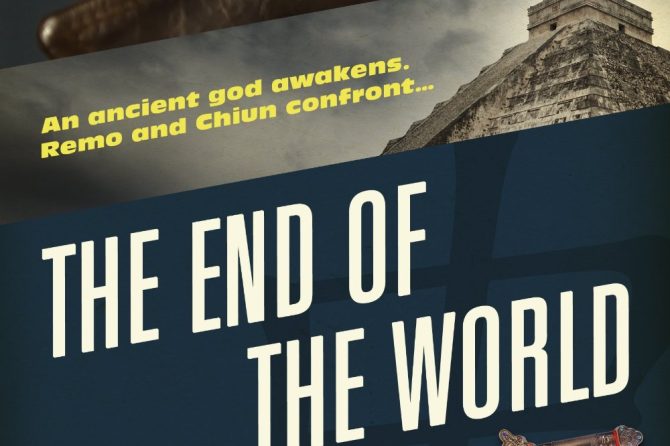
 During the biggest surge of the Omicron strain of COVID, my fellow Phil Dickian scholar David Gill and I stood at 2643 Dana Street in Berkeley. The current owner of the house stuck his head out of a window above the garage and told us if it wasn’t a pandemic, he would invite us in. The room he was in was the office of a pulps-era mystery and science fiction legend Tony Boucher. The house has a sign informing anyone walking by of the importance of the house. The friendly dude yelling at us was in the room where The Magazine of Fantasy and Science Fiction was first co-edited and founded.
During the biggest surge of the Omicron strain of COVID, my fellow Phil Dickian scholar David Gill and I stood at 2643 Dana Street in Berkeley. The current owner of the house stuck his head out of a window above the garage and told us if it wasn’t a pandemic, he would invite us in. The room he was in was the office of a pulps-era mystery and science fiction legend Tony Boucher. The house has a sign informing anyone walking by of the importance of the house. The friendly dude yelling at us was in the room where The Magazine of Fantasy and Science Fiction was first co-edited and founded.
William Anthony Parker White (AKA Tony Boucher) wrote books and edited magazines in more than one genre. It is one thing to have had such an impact in one genre that awards and conventions are named after you, but amazing to have impacted two genres. Boucher is known for being a godfather of American mystery novels but it was his impact on Science Fiction that had Gill and I standing in front of the house where Tony and Phil workshopped his first fiction sale Roog.
 Shout out to Tony was a long-running joke of Langhorne my Dickheads podcast co-host. We constantly saw evidence of influence. Two editors had the biggest impact on PKD. Don Wollheim published most of Phil’s novels and when talking about his career and the genre Phil always gave Don the credit for being not just one of, but one of the MOST important persons in Science fiction. Boucher, on the other hand, was more important to Phil on a personal as well as professional level. It is not just that he bought Phil’s first short story, but Tony inspired Phil to write Science Fiction in the first place. They first met when Boucher already had a long career underway. Philip Dick was working in a record store and Boucher was a regular, picking up records to play on his local opera radio show. Phil had dismissed the idea of writing sci-fi as kid stuff and it was Boucher that showed him that you could be a smart reader/ writer of the genre. It wasn’t just pulpy kids’ stuff like Buck Rodgers. When the two met Phil had tried and failed to make it past more than a couple of chapters into a Gnostic fantasy called Earthshaker that only a tiny number of us have read. He was starting a literary novel Gather Yourselves Together that would be published until after his death.
Shout out to Tony was a long-running joke of Langhorne my Dickheads podcast co-host. We constantly saw evidence of influence. Two editors had the biggest impact on PKD. Don Wollheim published most of Phil’s novels and when talking about his career and the genre Phil always gave Don the credit for being not just one of, but one of the MOST important persons in Science fiction. Boucher, on the other hand, was more important to Phil on a personal as well as professional level. It is not just that he bought Phil’s first short story, but Tony inspired Phil to write Science Fiction in the first place. They first met when Boucher already had a long career underway. Philip Dick was working in a record store and Boucher was a regular, picking up records to play on his local opera radio show. Phil had dismissed the idea of writing sci-fi as kid stuff and it was Boucher that showed him that you could be a smart reader/ writer of the genre. It wasn’t just pulpy kids’ stuff like Buck Rodgers. When the two met Phil had tried and failed to make it past more than a couple of chapters into a Gnostic fantasy called Earthshaker that only a tiny number of us have read. He was starting a literary novel Gather Yourselves Together that would be published until after his death.
Boucher charged $1 on Thursday nights and taught a class at his Dana Street house. The group of students included Dorthy and Philip K. Dick, Marian Zimmer Bradley, and a fifteen-year-old Ron Goulart among others.
 This group of friends would gather and talk about writing and critique each other’s work. Boucher of course had experience with a group like this and they were the basis of the 1941 novel Rocket To the Morgue. In 1940 Boucher and his wife were living in LA, and Boucher became a member of a writer’s group called the Minana Literary Society. This was a real writer’s group that at the time was hosted by Robert Heinlein, and included L. Ron Hubbard, Henry Kutter, and his wife C.L. Moore to name a few. JPL founder Jack Parsons was regular guest at these meetings and it was as important as Futurians in NYC for the development of the early SF community. Boucher used this group and real-life Science fiction figures like Forrest J Ackerman and John W. Campbell as characters in this murder mystery novel.
This group of friends would gather and talk about writing and critique each other’s work. Boucher of course had experience with a group like this and they were the basis of the 1941 novel Rocket To the Morgue. In 1940 Boucher and his wife were living in LA, and Boucher became a member of a writer’s group called the Minana Literary Society. This was a real writer’s group that at the time was hosted by Robert Heinlein, and included L. Ron Hubbard, Henry Kutter, and his wife C.L. Moore to name a few. JPL founder Jack Parsons was regular guest at these meetings and it was as important as Futurians in NYC for the development of the early SF community. Boucher used this group and real-life Science fiction figures like Forrest J Ackerman and John W. Campbell as characters in this murder mystery novel.
Keep in mind this novel was released under the name HH Holmes (yes the same name as the less famous at the time first American serial killer) Boucher made himself a character in the book as well. The details of the group are thinly veiled indeed Austin Carter is clearly Heinlein, D. Vance Wimpole is Hubbard, and Halstad Pyn is likely the future founder of Famous Monsters, Forest J Ackerman, who in 1940 was an agent. Don Stuart who is mentioned but not in the action is John W. Campbell.
So you see This book is a work of genius and super important to the history of two genres. It is important because:
1. Boucher tells a fascinating locked room mystery with interesting characters.
2. Boucher comments on a meta-level about the personalities of important figures in the history of science fiction. It is a chance to get to know these figures.
3. Boucher tells a great story and still manages to comment on the Science Fiction genre at a time when it was in infancy. Confined to pulp magazines and tiny convention halls. Science fiction novels didn’t get hardcover books so he was also introducing the world to the genre. Just two years before he approached a major mystery magazine to open his own SF magazine that still publishes today 50-plus years after his death.
4. A mystery novel sure but the most recent edition which features a great addition in the form of an excellent introduction by F. Paul Wilson (in the 2019 re-issue) makes sense to be shelved next to classic non-fiction books on the genre. Why because you’ll learn levels of history reading it.
So the actual story is a fun one. The heir to the literary estate of a writer who wrote popular supernatural detective novels Hilary Foulkes has several enemies. In 1941 Hollywood wanted to make his father’s stories into movies, and famous Science Fiction writers wanted to continue his work, but he refused their efforts, after several attempts at his life the suspicions were directed at the sci-fi group. The action follows Detective Terrance Marshall and Sister Mary Ursula, a nun of the Sisters of Martha of Bethany who has always dreamed of being a cop. This is the second Sister Ursula book but I have no idea if I am missing out on background about her.
The Mystery at the heart of the novel is fun, but it was not what interested me. The commentary and history of the Sci-fi genre were enough for me to make this a great read. The fun story was just a great bonus. As F.Paul Wilson author of The Keep and the Repairmen Jack Series said in his introduction “It made me want to run up to every science fiction fan I know and shove a copy at them, shouting “you have to read this!” I agree this book is a must-read for scholars of the genre.
 In the end, though this is a mystery novel, and while it is about Science Fiction and it is an important artifact, it is not Science Fiction. So if you really want to understand Boucher there is one other book I want you to consider putting on your TBR. Because as great as Boucher was at Mystery be was an excellent SF writer and editor.
In the end, though this is a mystery novel, and while it is about Science Fiction and it is an important artifact, it is not Science Fiction. So if you really want to understand Boucher there is one other book I want you to consider putting on your TBR. Because as great as Boucher was at Mystery be was an excellent SF writer and editor.
As a magazine founder, he published many of the debut stories from titans such as Philip K Dick and Richard Matheson. He knew a thing or two about short stories so it is a good idea to read his most famous collection of stories.
All the stories in the Compleat Werewolf were written during this period Boucher was publishing stories in both fields and hanging in LA with the Heinlein gang. They were not collected until the ’60s but this book represents his wartime Science Fiction and Horror. The stories appeared in pulp magazines such as Unknown Worlds, Astounding Science Fiction, Weird Tales, and a few others from 1941-45. Think about it this way most of these stories were written when Hitler was still alive just to put the stories’ age in perspective.
For that reason, they have a certain surreal feel as speculation from a time so long ago. Of Course, the sci-fi stories have some silly robots and private tubes going directly to spaceports but if you don’t find that charming I don’t know what to tell you. Out of date, Science Fiction is special for the window into the mind of the speculator – in this case, Tony Boucher.
From the opening title Novella with its sarcastic tone to the last story Ghost of Me which has a narrator questioning their sanity you can see the influence Boucher had on the guy who sold him Opera records. Let us start with that first Novella.
The Compleat Werewolf is a funny tale. The story of Professor Wolfe Wolf, an academic who is surprised when a mystic tells him that he has always been a werewolf and he knows just the spell to unlock his power. Published one year after Universal’s Wolf-Man. It presents the idea that a werewolf is automatically evil and the story more than any other in the collection has elements of Boucher’s detective stories.
I knew I was in for an amusing experience as soon as I read this scene early on…
“But a werewolf is a man that changes into a wolf. I’ve never done that. Honest, I haven’t.”
“A mammal,” Said Ozymandias, “is an animal that bears its young and suckles them. A virgin is nonetheless a mammal. Because you have never changed doesn’t make you less of a werewolf.”
“But a werewolf-“Suddenly Wolfe’s eyes lit up. “A werewolf is better than a G-man!”
There is some hilarious stuff relating to the professor trying to get closer to his crush as a dog, which as you can imagine doesn’t go well. Perhaps the funniest scene in the entire book is a part where Ozymandias talks about the word that unlocked his “were” skills.
“There is no telling what would happen if I taught her The Word.”
“Not the least. Of course, there’s some werethings that just aren’t much use being. Take a were-ant. You change and somebody steps on you and that’s that. Or like a fella I knew in Madagascar. Taught him the Word and know what? He turned wereiplodicus. Shattered the whole house into pieces when he changed and damned near trampled me under hoof before I could say Absarka!”
The second story the Pink Caterpillar is an interesting story as it is very weird, almost hard to explain. Set in a small town in Mexico It opens with a time travel discussion where the characters talk about traveling 100 years into the future. Being 80 years in the storyteller’s future as I read I found that striking. It is the story of a supernatural pact with a rural medicine man.
The next two stories are robot stories that were published under the name H.H. Holmes without the internet Boucher got away with the in-joke of using the first American Serial Killer’s title as a pen name. These stories Q.U.R. and Roboinc are one long novelette. This is a very forward-thinking Sci-fi story about the inventors who decide to stop wasting time making androids futuristic. While the story has forced sterilizations and travel tubes it also has black world leaders. Speaking to his audience in 1942 decades before the Civil Rights Act Boucher said this…
“…ten centuries ago people would have snorted just like that at the idea of a black as Head on this planet. Such narrow stupidity seems fantastic to us now. Our own prejudices will seem just as comical to our great-great-grandchildren.”
Snullbug was Boucher’s first short story as such it is important, containing magic and time travel it is a funny one. OK Gennie my wish is that you go to the future one day in the future and bring me back a newspaper. Fun one.
The Expedition is the best and weirdest sci-fi story in the collection. This story is bonkers and entirely built on a reversal. This is a story about the first contact between Martian and earthers during a Martian Expedition. This first contact is hilarious.
“…We have not fully deciphered his language but I have, as instructed, been keeping full phonetic transcriptions of his every remark. Trubaz has calculated psychologically that the meaning of this remark to be:
“Ministers of the Great one, be gracious to me.”
The phonetic transcription is as follows:
AND THEY TALK ABOUT PINK ELEPHANTS!
However, don’t leave this review that Boucher was only capable of humor. There is one truly great horror stories. For me the best of the collection is one F.Paul Wilson pointed out in our Tony Boucher panel (see links below). This story is a frightening horror story set in the sun-soaked California desert – They Bite. The set-up of this story in many ways reminded me of the classic Doctor Who story Blink. The set-up is great. Two characters are talking about the monsters that just barely stay out of sight.
“Optical fatigue-“ Tallant Began.
“Sure. I know every man to his own legend. There isn’t a tribe of Indians hasn’t some accounting for it. You’ve heard of the Watchers? And the twentieth-century white man comes along and it is optical fatigue. Only in the nineteenth century things weren’t quite the same and there were the Carkers.”
“You got a special localized legend?”
“Call it that. You glimpse things out of the corner of your mind like you glimpse lean, dry things out of the corner of your eye. You encase them in solid circumstance and they’re not so bad. That is the growth of the legend. The Folk Mind in Action. You take Carkers and the things you don’t see and you put them together. And they bite.”
Are they monsters or just a cannibal family Like the Hills Have Eyes? Not a product of nuclear testing but being left alone away from civilization and growing in legend and isolation. This is a fantastic horror story on every level, every word. To me the best thing I have read by Boucher.
As a whole, The Compleat Werewolf should be an essential history for fans of Horror and Science Fiction. A must-read.
Check out the panel I hosted about the author of this book on Dickheads… Featuring Gary K Wolfe, F.Paul Wilson, Gordan Van Gelder, and myself.
https://soundcloud.com/dickheadspodcast/dick-adjacent-7-shout-out-to-tony-boucher
https://www.youtube.com/watch?v=Fsz67cLwmuI&t=341s












1 Comment